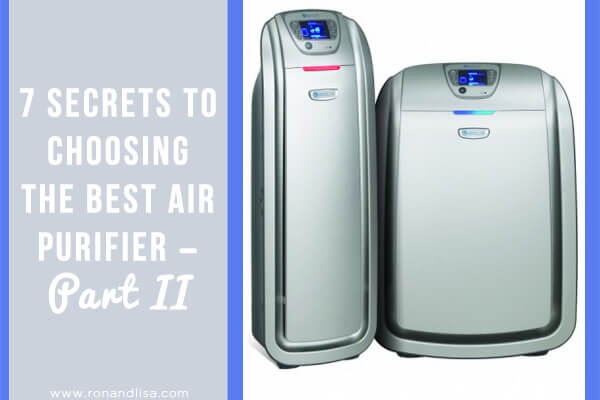By now you have learned of three of the basics filtration techniques available to purify your indoor air in 7 Secrets to Choosing the Best Air Purifier for Your Home – Part I. In order to make the right choice for your household, you still need to learn the dos and don’ts of the final four components!
#4 The negative ion generator is a unit that changes the electrical charge of its surroundings. It attracts particles and dust, which then drop out of the air onto the floor near the unit. The dust or pollen is taken out of the air, but these particles are then stuck to the wall or items in the room that the air purifier is cleaning. The particles can easily become loose and circulate the air again. This type of unit is especially useful for reducing cigarette smoke and odors, but it, too, must be cleaned often. This type of technology claims to have the same level of efficiency as other filters, but proves less effective than HEPA filters and electronic technology. Buyer Beware: Some negative ion generators on the market also emit potentially harmful levels of ozone as a byproduct and should be avoided at all costs.
SAVING GREEN: Total Cost: $50.
#5 Ozone air purifiers release ozone (O3) into the air. They work much like an ionizing filter by altering molecules of oxygen and turning them into ozone, a molecule made up of three oxygen atoms. This reactive oxidant is effective against chemical fumes, odors, and bacteria but cannot eliminate particles and other allergens. There is strong evidence that ozone does not accomplish air purification. Ozone is also known to be a toxic gas. It is not a very stable molecule; it reacts readily with other chemicals that may be in the air, forming new compounds that can be more dangerous than the ozone itself. Ozone is active oxygen and can be dangerous to people’s health. This is especially true for people with respiratory problems such as asthma emphysema, and bronchitis. These purifiers must be used cautiously or avoided completely. NOTE: In The California Air Resources Board (ARB) has adopted a regulation to limit ozone emissions from indoor air cleaning devices. Since October 18, 2010, all indoor air cleaners sold in, or shipped to, California must meet certain ozone emission and electrical safety standards and labeled accordingly.
SAVING GREEN: Total Cost: Too much for the risk.
#6 Ultraviolet light. Air purifiers with UV filters are often used in sterile environments such as hospitals, kitchens, daycare centers and labs. Some air purifiers feature a UV light that bathes the air as it passes through, eliminating the potential harm of airborne bacteria and viruses. As antigens and pathogens pass over the lamp, it emits ultraviolet waves that alter their DNA, making them sterile and harmless.
SAVING GREEN: Total Cost: $100-300
#7 Electrolyzed Water Technology™ Sanyo’s proprietary electrolyzed water technology air purification system helps to suppress airborne bacteria and germs, without the addition of chemicals. The electrolyzed water purification system is unique to the market place and has global third party certification to confirm its efficiency in not only suppressing airborne germs and bacteria but odors, allergens and mold.
The ultra-fine water droplets dispersed and created from the air purifier remove a wide range of contaminants and unpleasant odors that occur commonly in the home. The air purifier transforms ordinary water into a fine disinfectant electrolytic mist that disables air borne bacteria from being as harmful to human contact. The disinfectant mist does this by deactivating the protein spikes on the air borne bacteria it comes in contact with and in essence disables its ability to attach onto human cells. This process not only provides added protection to the air quality of a home, but it also helps to eliminate odor molecules in the air.
SAVING GREEN: Total Cost: $249.00
Stay tuned for our next post! Lisa & Ron’s air purifier brand recommendations.



